Scotland beats Denmark 4-2 to book first World Cup spot since 1998

Denmark needed just a draw for automatic qualification. Now they must fight for a spot through playoffs. Published On 19 Nov 202519 Nov 2025 Click here to share on social media share2 Share Scotland has qualified for the World Cup finals for the first time since 1998 after a hair-raising match against Denmark that saw the Scottish side secure a memorable 4-2 victory with most of the action taking place in the final minutes. Expectations hung heavy in the night air long before kickoff on Tuesday in Glasgow as Scotland’s date with destiny loomed. Recommended Stories list of 4 itemsend of list Despite qualifying for the last two European Championships, World Cup qualification has proved out of reach for Scotland since France 1998. Yet the Scottish side beat a 10-man Danish side 4-2 in a winner- takes-all match in Group C with Scott McTominay scoring with a bicycle kick just three minutes into the match, sending Scotland’s supporters at Hampden Park into raptures. The early cheers of the Scottish fans were dampened when Denmark’s Rasmus Hojlund levelled the score. Scotland’s Lawrence Shankland then put the home team ahead again, but that too was equalised by the Danes’ Patrick Dorgu in the 82nd minute. Scotland’s Scott McTominay celebrates scoring their first goal against Denmark on November 18, 2025 in Glasgow [Lee Smith/Reuters] A draw in the game would have given Denmark the group win, and the Danes were in a good position to achieve that result before Kieran Tierney put the Scottish side ahead again three minutes into added time. Kenny McLean then sealed Scotland’s World Cup qualification eight minutes into stoppage time when he chipped a shot over Danish goalkeeper Kasper Schmeichel from the halfway line. “You would not believe it,” one match commentator said when Scotland scored their fourth goal, sending fans into delirium and ensuring the game will become part of the fabled folklore of Scottish football. Advertisement “We’ve been on a journey. I spoke to them about it pre-match, about how this is the opportunity we’ve waited for,” Scotland coach Steve Clarke said after the game. “This was the chance, one game. This was like a playoff final. We put everything on the line. There’s always one last step, and it’s always the hardest,” he said. Denmark’s Rasmus Hojlund shoots at the Scottish goal during the FIFA World Cup qualifier at Hampden Park [Russell Cheyne/Reuters] Denmark, which saw Rasmus Kristensen sent off in the 62nd minute, finished second in the group, two points behind Scotland. For much of the game, Denmark appeared to be the superior team. But after an already roller-coaster World Cup qualifying campaign for the Scots, including a 3-2 defeat in Greece on Saturday, the biggest twist was saved to the very end as the two goals in stoppage time sparked the loudest party the city of Glasgow has seen for years. “That just sums up this squad – never say die. We just keep going right to the end in one of the craziest games,” Scotland captain Andy Robertson said. “We put the country through it, but I’m sure it’s worth it. We’re going to the World Cup,” he said. Denmark, who only needed to avoid defeat to make sure of their third successive World Cup finals appearance, were left crestfallen. They will now join 11 other teams that finished second in their groups in a playoff competition: Only four of these 12 teams will qualify for the World Cup. Adblock test (Why?)
Polish company accused of supplying explosives for Israel’s war on Gaza

A Polish state-owned company has been accused of playing a crucial role in aiding Israel’s genocidal war on Gaza, providing a key explosive used in bombs and artillery that have been widely deployed in the Strip. A report released on Tuesday by a group of pro-Palestinian organisations found the explosives maker Nitro-Chem to have supplied United States arms companies with trinitrotoluene (TNT) for use in military shells, bombs, and grenades that are exported to Israel, a top US ally. Recommended Stories list of 3 itemsend of list Poland, the only major TNT producer in the EU and NATO, was identified by the People’s Embargo for Palestine, Palestinian Youth Movement, Shadow World Investigations and Movement Research Unit as the source of the explosive used in the general-purpose Mk 80 series – among the most common air-dropped weapons in the world – as well as the penetrator BLU-109 bomb. “This report decisively implicates Nitro-Chem and the Polish government as a critical link in facilitating the supply chain of genocide,” Nadya Tannous, an organiser with the Palestinian Youth Movement, told Al Jazeera. Air-dropped bombs are typically filled with an explosive mix of TNT and aluminium powder. Ninety percent of TNT imported by the US – where there is no domestic production – comes from Poland, the report found. Nitro-Chem has also been selling explosives, including TNT, directly to Israel, according to the report. While UN experts have found Israel to be committing genocidal acts in Gaza and called on all states to fulfil their legal obligations under the Genocide Convention, the report is evidence of Poland’s role “in the massacre of hundreds of thousands of Palestinians”, said Tannous. Advertisement Surviving Israeli bombs in Gaza Since launching its latest war on Gaza in October 2023, following the Hamas-led incursion into southern Israel, the Israeli army has relied heavily on guided and unguided Mk 80 bombs sold by General Dynamics, the world’s fifth-largest weapons manufacturer. Video evidence of unexploded Mk 84 bombs – the largest of the series – with markings indicating that the bomb was produced by General Dynamics – confirms that they have been used in the Strip. Israel is known to have used unguided bombs of the Mk 80 series in the targeting of Gaza’s Jabalia refugee camp on October 31, 2023, which could amount to a war crime, according to the UN High Commissioner for Human Rights. These were also converted into guided Joint Direct Attack Munitions (JDAMs), such as the one used to strike civilian homes in Deir el-Balah on October 10, 2023. Amnesty International, which investigated that attack, called the strikes unlawful and tantamount to a war crime. According to the Euro-Med Human Rights Monitor, Israel dropped more than 25,000 tonnes of explosives on the Strip – equivalent to two nuclear bombs – in the first month of the war. As fighting intensified, Mahmoud (*not his real name) was sleeping alongside his wife and children in their home in southern Gaza when a loud explosion shook the earth. The walls collapsed on them, and a fire broke out among the rubble. The family was rescued and taken to the hospital. “After I left the hospital, I didn’t have any shoes, so I walked barefoot on the pieces of glass, rubble, cement and metal,” he said. “I didn’t feel anything, I just stood there for hours and stared at the pile of rubble that, a few hours ago, was our home.” Thirteen of his relatives were killed in the bombing, including seven children. Mahmoud has since been able to leave Gaza and relocate to Europe with the surviving members of his family. Footage from the scene shows shrapnel compatible with the Mk 80 bomb series, according to military analysts. Al Jazeera is withholding details of the incident, as well as of the survivor’s identity, to reduce the risk of reprisal or retaliation. While the family is now miles away, the memories of what they experienced in Gaza have followed them. “The bombing has been haunting our family every day since. It left all of us traumatised,” Mahmoud said. Finding out that Poland likely provided the explosive that tore his family apart has left him shaken. “I feel sadness and disappointment that a country, which advocates for human rights and humanitarianism, has forgotten that there are human beings in the Gaza Strip bombed every day – humans no different than people in Europe,” he said. Advertisement “These bombs are used mainly to [target] residential homes, tents made out of plastic sheets, civilian infrastructure … They have a wide effect, they are not precise, and they destroy everything around,” Mahmoud continued. The Mk 84 has enormous destructive capacity, with a lethal radius of about 360 metres (about 1,180 feet) and an injury radius of up to 800 metres (2,625 feet) from the point of detonation. “How is it possible that Poland agrees to produce and sell explosive material, knowing it will be used against civilians?” he said. Al Jazeera has contacted Nitro-Chem and representatives of the Polish government for comment. Polish TNT for American bombs General Dynamics has been sourcing TNT for Mk 80 series bomb production from Nitro-Chem since at least 2016. Polish-made TNT also ended up in the penetrator BLU-109 bomb, which can destroy underground and heavily fortified targets, according to information provided to the authors of the report by the bomb’s US manufacturer, General Dynamics Ordnance and Tactical Systems (GD-OTS), the Polish company Nitro-Chem and US government databases. The company’s dealings with the US and Israel have continued despite the International Court of Justice (ICJ) ordering emergency measures in January 2024 to prevent genocidal acts and recognising genocide as a plausible risk. In April 2024, Nitro-Chem signed a contract with Paramount Enterprises International to supply TNT for Mk 80 series bombs and, shortly after, the US government approved the transfer of 1,800 Mk 84 bombs to Israel. Most recently, in April 2025, the company signed its largest contract yet – worth $310m – for the delivery of 18,000
Survivors denounce Trump’s attempts to block Epstein files vote
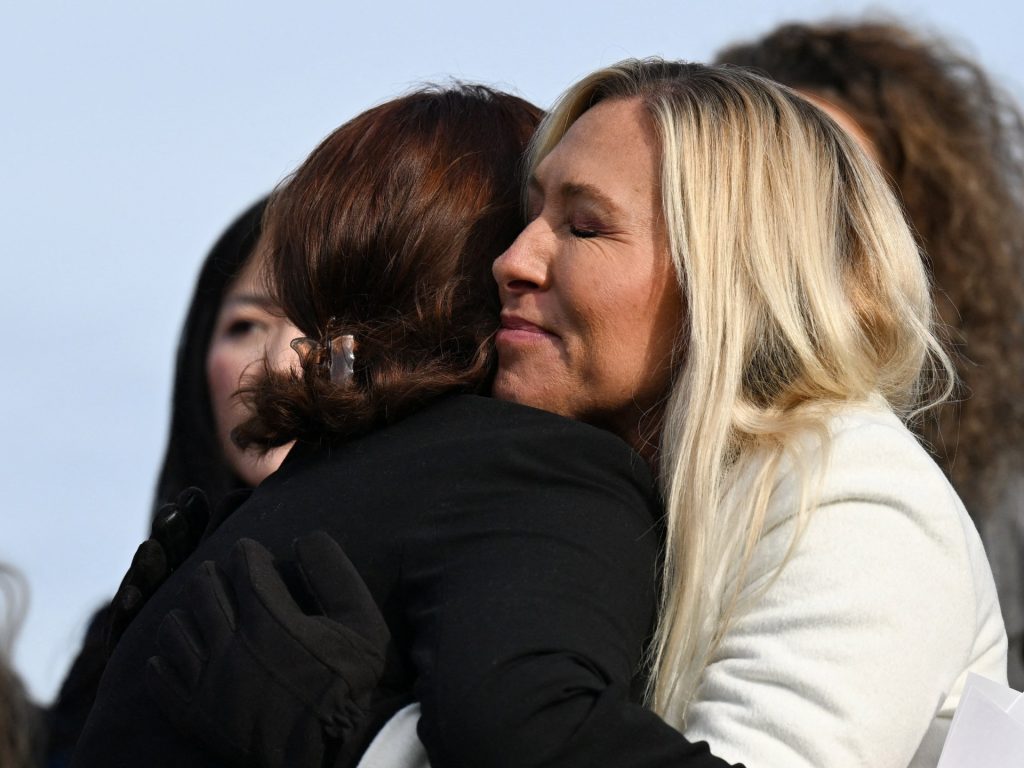
NewsFeed US Congresswoman Marjorie Taylor Greene and survivors of Jeffrey Epstein’s abuse sharply criticised President Donald Trump for previously attempting to block a House vote on the release of files related to Epstein. Trump on Sunday dropped his opposition and the measure now is expected to overwhelmingly pass. Published On 18 Nov 202518 Nov 2025 Click here to share on social media share2 Share Adblock test (Why?)
WFP warns of deepening hunger crisis amid funding shortfall
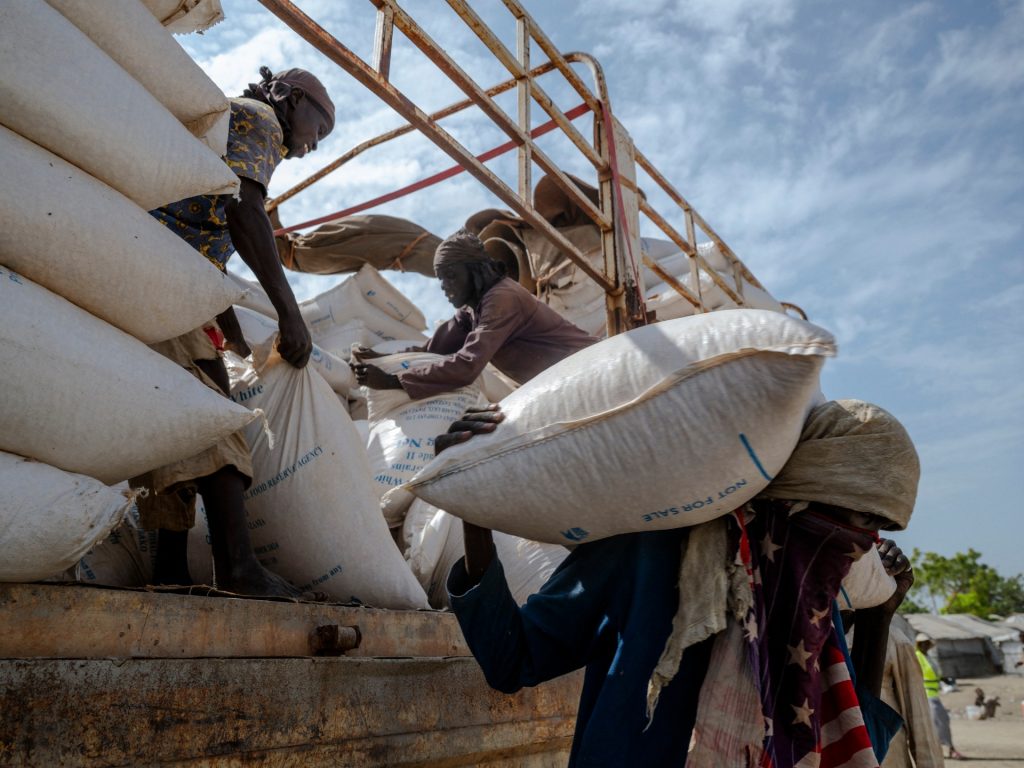
UN agency said an estimated 318 million people will face acute food insecurity in 2026. Published On 18 Nov 202518 Nov 2025 Click here to share on social media share2 Share The World Food Programme (WFP) has said that funding cuts will worsen a deepening hunger crisis around the world, warning that more than 300 million people will face acute food insecurity next year. “Food insecurity is expected to remain at alarming levels,” the organisation said in its 2026 Global Outlook report released on Tuesday. Recommended Stories list of 3 itemsend of list The UN agency said an estimated 318 million people will face acute food insecurity in 2026, which equates to “crisis” level or worse, and is more than double the number in 2019. Of these, around 41 million are estimated to be in the “emergency” phase or worse, which is the equivalent of an IPC 4 or higher classification on a globally accepted hunger monitoring system. The WFP anticipates being able to feed about 110 million people in 2026, leaving much of the global population in need of food help without its assistance. The organisation said it estimates its operational requirement to stand at $13bn for 2026, with most going to crisis response and other expenses, including resilience building and addressing root causes. Current forecasts suggest that the WFP may receive only about half that amount. “The world is grappling with simultaneous famines, in Gaza and parts of Sudan. This is completely unacceptable in the 21st century,” WFP Executive Director Cindy McCain said in a statement. “Hunger is becoming more entrenched. We know early, effective solutions save lives, but we desperately need more support.” In Gaza City and its surrounding areas, the IPC declared famine in August, months after the Israeli military imposed a monthslong total blockade on Gaza. The hunger crisis across the Palestinian territory remains dire as Israel continues to impose restrictions on supplies of food, fuel, water and medicines. Advertisement Famine conditions were confirmed in Sudan’s el-Fasher and Kadugli earlier this month, as well as 20 other areas in Darfur and Kordofan – battlegrounds between the paramilitary Rapid Support Forces and the Sudanese army – at risk of sliding into famine. Families reaching this camp near El Fasher arrive exhausted and hungry. WFP’s @FaithAwino3 explains how WFP is rushing emergency food and nutrition support to over half a million people and scaling up help to surrounding areas. pic.twitter.com/cX4iqGUFhh — WFP Sudan (@WFP_Sudan) November 17, 2025 Afghanistan, Yemen, Syria, South Sudan, the Sahel region of East Africa, the Democratic Republic of the Congo, Haiti and Nigeria are some of the other hotspots of concern. Conflict remains the dominant driver of hunger globally, with more than two-thirds of all acute food insecurity attributable to conflict-driven crises. Climate shocks, economic instability, and food and energy price inflation further exacerbate the situation, according to the WFP. Yet the agency said last month that it expected to receive 40 percent less funding next year. The United States has been the largest and wealthiest country to announce hugely impactful funding cuts for the WFP and other UN and international agencies following President Donald Trump’s “America-first” return to the White House earlier this year. Adblock test (Why?)
Trump hails lower prices amid rising discontent over cost of living
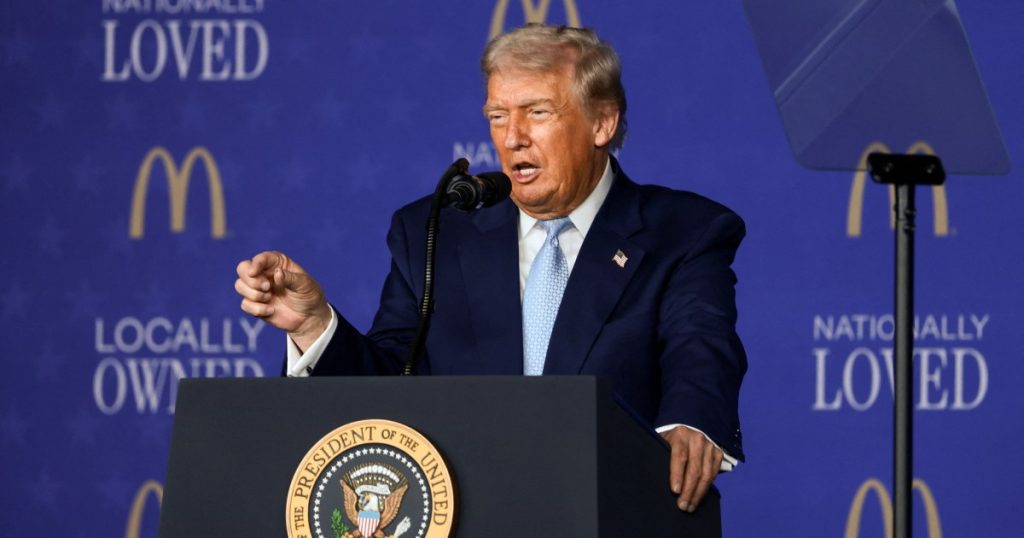
US president defends economic policies as polls show growing angst among voters over prices. Published On 18 Nov 202518 Nov 2025 Click here to share on social media share2 Share United States President Donald Trump has defended his administration’s record on lowering prices as he faces growing discontent from Americans over the cost of living. In a speech to McDonald’s franchise owners and suppliers on Monday, Trump claimed credit for bringing inflation back to “normal” levels while pledging to bring price growth lower still. Recommended Stories list of 4 itemsend of list “We have it down to a low level, but we’re going to get it a little bit lower,” Trump said. “We want perfection.” Returning to his regular talking point that Democrats had mismanaged the economy, the Republican president blamed cost pressures on former US President Joe Biden and insisted Americans were “so damn lucky” he won the 2024 election. “Nobody has done what we’ve done in terms of pricing. We took over a mess,” Trump said. Trump, whose 2024 presidential campaign focused heavily on the cost of living, has struggled to win over Americans with his protectionist economic message amid persistent affordability concerns. In an NBC News poll released this month, 66 percent of respondents said Trump had fallen short of their expectations on affordability, while 63 percent answered the same for the economy in general. Voter angst over prices has been widely identified as a key reason Republicans suffered a shellacking in off-year elections held early this month in multiple states, including New Jersey and Virginia. Despite repeatedly playing down the effects of his tariffs on prices, Trump on Friday signed an executive order lowering duties on 200 food products, including beef, bananas, coffee and orange juice. Advertisement Trump has also floated tariff-funded $2,000 rebate cheques and the introduction of 50-year mortgages as part of a push to address affordability concerns. While inflation has markedly declined since hitting a four-decade high of 9.1 percent under Biden, it remains significantly above the Federal Reserve’s 2 percent target. The inflation rate rose to 3 percent in October, the first time it hit the 3 percent mark since January, although many analysts had expected a higher figure due to Trump’s trade salvoes. Trump, who is well known for his love of McDonald’s, spent a considerable portion of Monday’s speech praising the fast-food chain and casting the company as emblematic of his economic agenda. “Together we are fighting for an economy where everybody can win, from the cashier starting her first job to a franchisee opening their first location to the young family in a drive-through line,” he said. Trump also offered “special thanks” to the fast-food giant for rolling out more affordable menu options, including the reintroduction of extra value meals, which were phased out in 2018 and are priced at $5 or $8. “We’re getting prices down for this country, and there’s no better leader or advocate than McDonald’s,” he said. Adblock test (Why?)
Russia-Ukraine war: List of key events, day 1,363
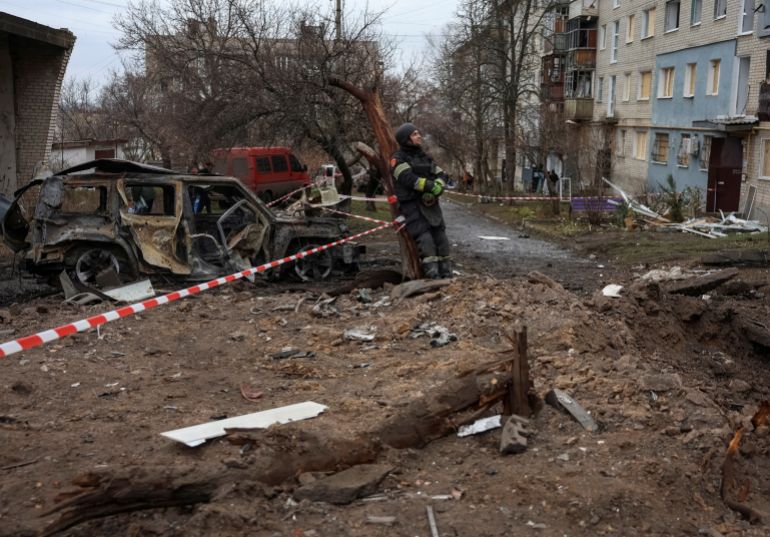
Here are the key events from day 1,363 of Russia’s war on Ukraine. By News Agencies Published On 18 Nov 202518 Nov 2025 Click here to share on social media share2 Share Here is how things stand on Tuesday, November 18: Fighting A Russian missile strike on the eastern Ukrainian city of Balakliia killed three people and wounded 10, including three children, a regional military official in the Kharkiv region said on Telegram on Monday. At least two people were killed and three were injured in Russian shelling of the Nikopol district in Ukraine’s Dnipropetrovsk region, Vladyslav Haivanenko, the acting head of the Dnipropetrovsk Regional Military Administration, wrote on Facebook. Russian troops captured three villages across three Ukrainian regions, the RIA news agency cited the Russian Ministry of Defence as saying on Monday. The villages are Hai in the Dnipropetrovsk region, Platonivka in the Donetsk region and Dvorichanske in the Kharkiv region. Russia’s air defence forces destroyed 36 Ukrainian drones overnight, RIA reported on Monday, citing the Defence Ministry’s daily data. A Russian attack on Ukraine’s southern region of Odesa sparked fires at energy and port infrastructure facilities, Ukraine’s emergency services said on Monday. The attack damaged port equipment and several civilian vessels, including one carrying liquefied natural gas, and forced Romania to evacuate a border village, Ukrainian Foreign Minister Andrii Sybiha wrote on X. A 68-year-old man has died after he was injured in a Russian drone attack in Ukraine’s Kherson region, the head of the regional administration, Oleksandr Prokudin, wrote on Telegram. Two Ukrainian nuclear power plants have been running at reduced capacity for 10 days after a military attack damaged an electrical substation needed for nuclear safety, International Atomic Energy Agency chief Rafael Grossi said in a statement. The Kremlin said on Monday that Russia’s port of Novorossiysk resumed export activities after a Ukrainian attack caused a two-day suspension of its oil loadings. A firefighter stands at the site of apartment buildings hit by Russian missile strikes in the town of Balakliia in Ukraine’s Kharkiv region on November 17, 2025 [Anatolii Stepanov/Reuters] Military aid Advertisement Ukrainian President Volodymyr Zelenskyy signed a deal with French President Emmanuel Macron at France’s Velizy-Villacoublay Air Base for Ukraine to obtain up to 100 French-made Rafale warplanes over the next 10 years. Macron said France’s rail transport manufacturer Alstom and Ukrainian Railways have signed a 475-million-euro ($551m) contract on delivering 55 electric locomotives to Ukraine, according to the Interfax news agency. Regional security Polish Interior Minister Marcin Kierwinski said on Monday that one confirmed and one likely act of sabotage occurred on Polish railways after an explosion damaged a Polish railway track on a route to Ukraine over the weekend. Polish Special Services Minister Tomasz Siemoniak added during the same news conference that chances are very high that the people who conducted the sabotage were acting on orders of foreign intelligence services. He appeared to be pointing fingers at Russia although he did not name the country. Politics and diplomacy During a joint news conference in Paris, Macron said he was confident Zelenskyy could improve Ukraine’s anticorruption track record and institute reforms to clear its path to European Union membership. German Finance Minister Lars Klingbeil told Chinese Vice Premier He Lifeng during a state visit to Beijing on Monday that the two countries “should work together to finish the war in Ukraine” and “China can play a key role”. He responded by saying, “China will continue to play a constructive role in the political settlement of the Ukraine crisis.” The Kremlin said on Monday that there was an ongoing conversation about a possible prisoner-of-war exchange with Ukraine but declined to provide details. Kremlin spokesman Dmitry Peskov said on Monday that Russia hoped for another summit between President Vladimir Putin and United States President Donald Trump soon. Peskov added that Moscow took a very negative view of a bill that Trump said Republicans in the US were working on that would impose sanctions on any country doing business with Russia. Russia’s financial watchdog added former Prime Minister Mikhail Kasyanov and leading economist Sergei Guriev – both critics of Russia’s invasion of Ukraine – to its list of “extremists and terrorists”, its website showed on Monday. Economy European Commission President Ursula von der Leyen said in a letter to EU members on Monday that the bloc had three options or a combination of them to help Ukraine meet its financing needs: “Support … financed by member states via grants, a limited recourse loan funded by the union borrowing on the financial markets or a limited recourse loan linked to the cash balances of immobilised assets”. The Chevron oil company is studying options to buy international assets of sanctioned Russian oil firm Lukoil after the US Department of the Treasury gave clearance to potential buyers to talk to Lukoil about foreign assets, five sources familiar with the process told the Reuters news agency. Advertisement Adblock test (Why?)
Jake Paul to fight Anthony Joshua in heavyweight bout on December 19
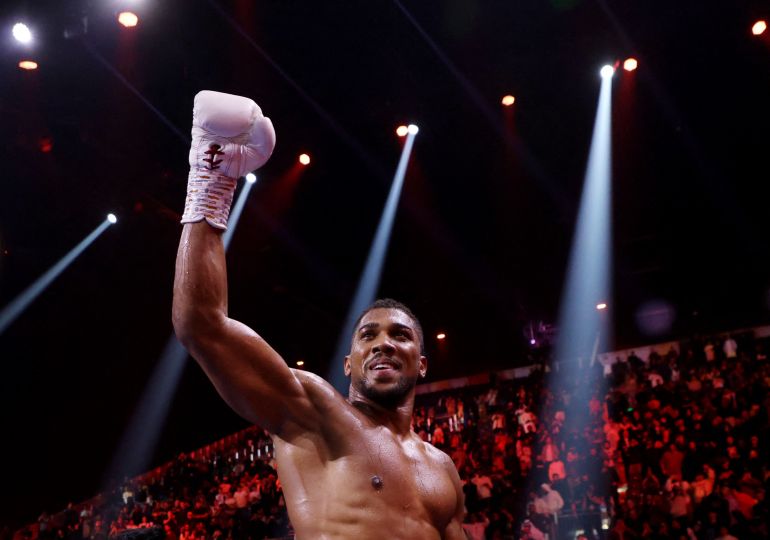
The social media star will box former two-time unified world champion Joshua in an eight-round professional fight. By News Agencies Published On 18 Nov 202518 Nov 2025 Click here to share on social media share2 Share YouTuber-turned-boxer Jake Paul will fight former world heavyweight champion Anthony Joshua in a professional bout on December 19. The heavyweight matchup, which will consist of eight three-minute rounds, will take place at Kaseya Center in Miami and will be streamed live on Netflix. Recommended Stories list of 3 itemsend of list It will be the toughest fight yet for the 28-year-old Paul, who has a 12-1 record (7 KOs) and last fought in June when he beat former middleweight champion Julio Cesar Chavez Jr by unanimous decision. “This isn’t an AI simulation. This is Judgment Day,” Paul told Netflix. “A professional heavyweight fight against an elite world champion in his prime. “When I beat Anthony Joshua, every doubt disappears, and no one can deny me the opportunity to fight for a world title. To all my haters, this is what you wanted.” Joshua is a two-time unified heavyweight world champion and Olympic gold medallist, but the 36-year-old hasn’t fought since losing to Daniel Dubois in an IBF title fight in September 2024. “Jake or anyone can get this work,” Joshua said. “No mercy. I took some time out and I’m coming back with a mega show. It’s a big opportunity for me. “Whether you like it or not, I’m here to do massive numbers, have big fights and break every record whilst keeping cool, calm and collected … I’m about to break the internet over Jake Paul’s face.” Anthony Joshua celebrates after winning his fight against Otto Wallin at the Kingdom Arena, Riyadh, Saudi Arabia on December 24, 2023 [Ahmed Yosri/Reuters] Adblock test (Why?)
UK’s sweeping asylum law changes: How will they impact refugees?
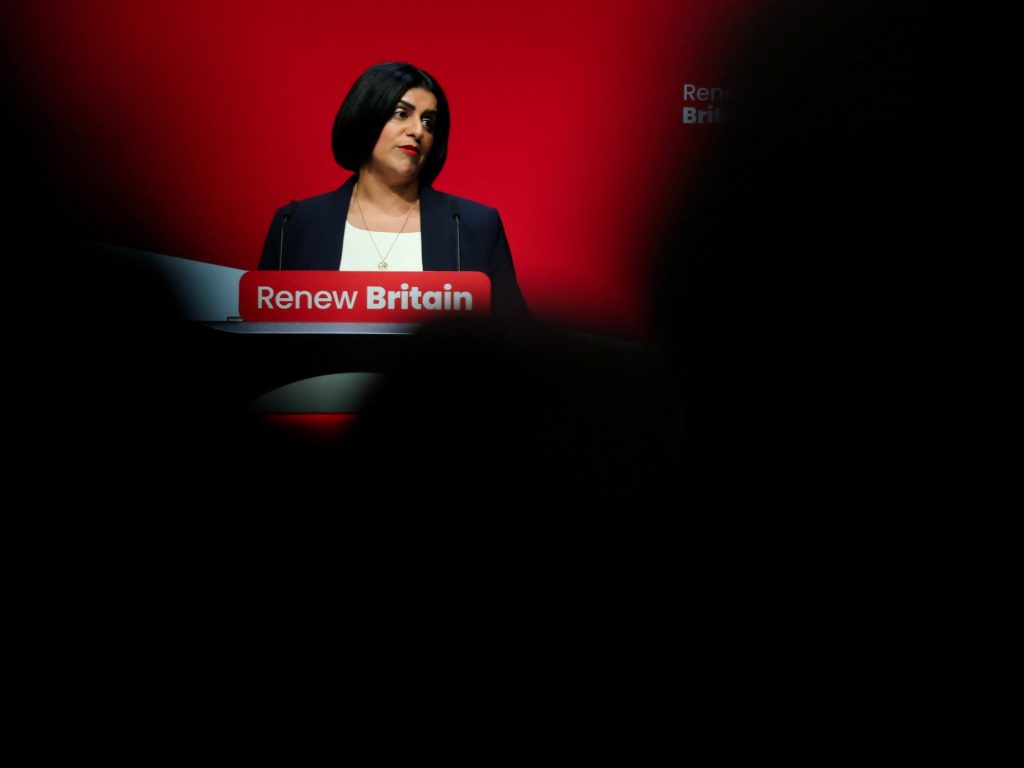
Shabana Mahmood, the United Kingdom’s home secretary, has said the country’s asylum system is “not working” and is placing “intense strain on communities” ahead of proposals for major government reforms that would end refugees’ automatic right to settle permanently in the UK. Speaking to the BBC on Sunday, Mahmood said undocumented migration is “tearing the country apart”. Recommended Stories list of 4 itemsend of list The government’s proposals, to be unveiled on Monday, will have two main prongs. First, they would end the automatic path to settled status for refugees after five years. And second, they would remove state benefits from those who have the right to work and can support themselves. After a summer of fierce protests outside hotels housing asylum seekers and an anti-immigration march in London, Mahmood also announced new plans to curb small-boat crossings from France as well as to return refugees to their home countries once it is safe to do so. What are the current immigration numbers? Figures from the Office for National Statistics (ONS) showed that net migration – the number of people entering a country minus the number leaving – had hovered around 200,000 to 300,000 people per year since 2011. However, after Brexit was enacted in 2020, there was a large increase in the number of undocumented immigrants entering the UK. Data from the ONS showed net migration climbed to 906,000 for the 12 months to June 2023. But more recent figures showed those numbers have fallen dramatically since then. Net migration figures dropped by more than half in 2024 – to 431,000. This was largely owing to a decrease in the number of healthcare and student visas made available last year. Advertisement Meanwhile, despite a UK media focus on people arriving in small boats from France, this group makes up a small share of the overall number of people entering the country. In 2024, for instance, the Home Office found that 36,816 people who arrived in the UK came via small boats. In total, 108,138 people claimed asylum last year. Of those, only one-third came via small boats. As such, most claims for asylum went through formal channels (and included some dependants of those people). Despite the falling numbers, disquiet with the ruling Labour Party remains rife. In an August YouGov poll, 38 percent of respondents said they believed Reform UK, an anti-immigration party, would be more effective at handling asylum cases than Labour, who secured just 9 percent of the tally. What changes is the government announcing? Access to citizenship On Monday, the government is expected to announce a shift from permanent settlement for refugees to a temporary-protection model. Current rules stipulate that refugees granted asylum may remain in the UK for five years before being able to apply for an “indefinite leave to remain”, opening the door to citizenship. But under the new plans, those who enter the UK through the asylum process could face up to 20 years before seeking permanent residency. In addition, people granted asylum would have to renew their status every 30 months to see if the situation in their home country has changed such that UK residence is still required. Access to social benefits Mahmood said she intends to repeal the legal duty of the government to provide accommodation and basic financial support to all asylum seekers. The government is expected to withdraw support from asylum seekers deemed able to work as well as from those people who commit offences, ignore removal orders or work illegally. Asylum seekers may currently apply for permission to work if their asylum claim has been outstanding for 12 months or more and if the delay is not considered their fault. What do refugee rights groups say? Enver Solomon, chief executive of the Refugee Council charity, said that instead of deterring migrants, the 20-year path to citizenship would “leave people in limbo and experiencing intense anxiety for many, many years”. “We need a system that is controlled and is fair, and the way you do that is you make decisions fairly, in a timely fashion, and if someone is found to be a refugee, they go on and they contribute to our communities and they pay back,” he told the programme BBC Breakfast on Sunday. Advertisement Mahmood’s proposal for 30-month checks implies that refugees could be sent back to their home countries once the government believes conditions on the ground have improved – an approach inspired by Denmark’s much-debated policy. Although research by the Danish Foreign Policy Yearbook has found that deterrence has limited influence on where asylum seekers travel to, a 2017 study did suggest that Denmark’s “negative branding” had led to fewer asylum applications. How have others reacted to the proposals? While Oxford University’s Migration Observatory said Mahmood’s overhaul would make the UK’s immigration system among the strictest countries in Europe, Matt Vickers, the opposition home office minister, said the government’s new plans to reform the asylum system contain “lots of gimmicks”. He told the BBC that a “deterrent” is what is needed: “If people arrive in this country and know they’re going to get sent back, they won’t get in those boats in the first place.” What other proposals is the UK government making? Using artificial intelligence tools to assess age The government wants to introduce artificial intelligence-based assessments to determine the age of people who arrive without documentation. Ministers said errors in the current system risk placing adults in children’s services or wrongly treating minors as adults. Rights groups, however, warned that automated systems could entrench bias, wrongly classify children as adults and expose them to harm. Earlier this year, Solomon told the BBC that he was “not convinced” that using AI tools was the government’s correct approach on age identification because he has concerns about children being put in unsafe situations. He added that “these [AI] technologies continue to raise serious questions about accuracy, ethics and fairness.” Visa ban threat for three African countries The Home Office has said visa applications from Angola, Namibia and the
Two missing after mudslides rip through northern Italy
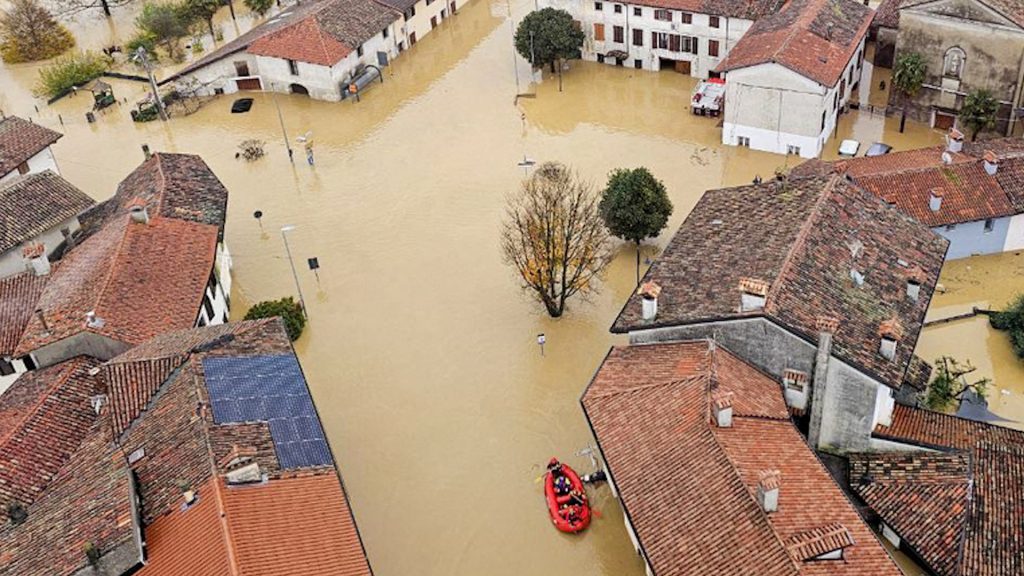
NewsFeed Firefighters in northeastern Italy are searching for two people missing after a mudslide tore through a home overnight in Brazzano di Cormons. A woman and a 35-year-old German man who lives locally remain unaccounted for. One person has already been rescued. Published On 17 Nov 202517 Nov 2025 Click here to share on social media share2 Share Adblock test (Why?)
Japanese PM Takaichi’s Taiwan remarks spark spat with China
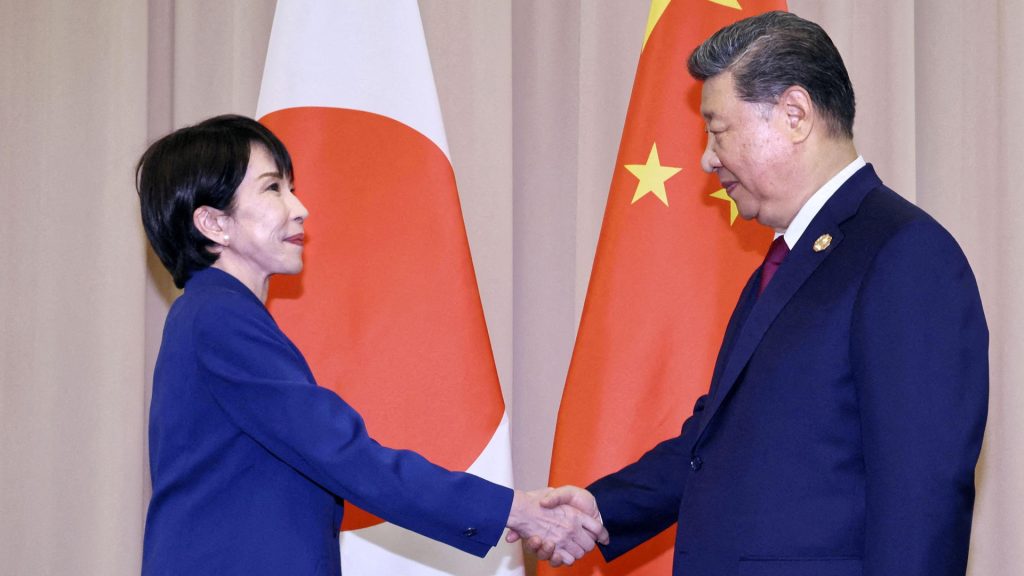
NewsFeed China is warning its citizens against traveling to Japan as it retaliates over Japanese Prime Minister Sanae Takaichi’s recent comments on Taiwan. Al Jazeera’s Katrina Yu explains. Published On 17 Nov 202517 Nov 2025 Click here to share on social media share2 Share Adblock test (Why?)

